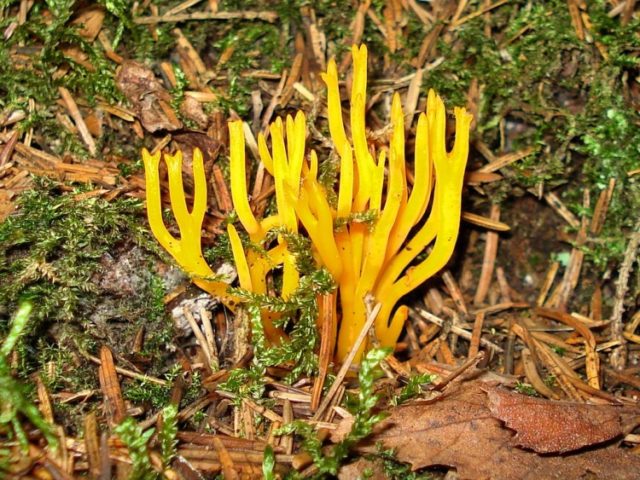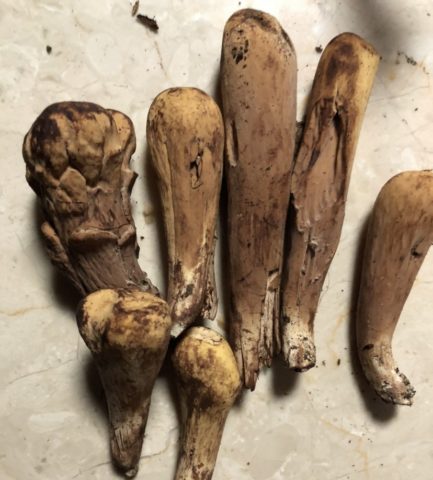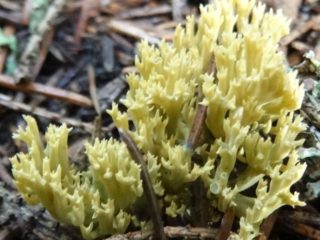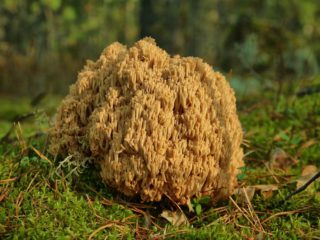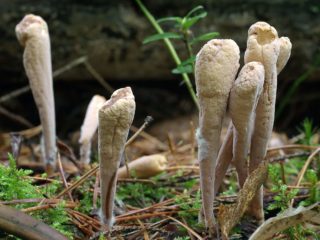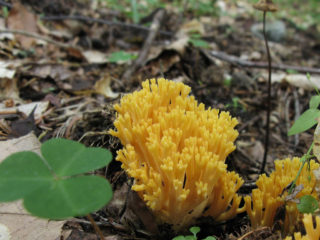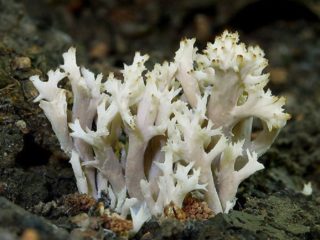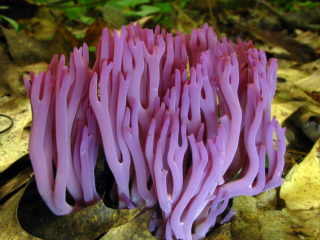Content
Rogatik pistil belongs to the conditionally edible mushrooms from the family Clavariadelphaceae, genus Clavariadelphus. Many people don't eat it because of its bitter taste. This species is also called clavaceae or clavariadelphus pistil.
Description of Horntail Pistil
It looks like a mace and therefore the common people call the horned hercules. The leg is covered with longitudinal wrinkles. The color is light yellow or reddish, the base is felt, light.
Description of the pistillate cattail shown in the photo:
- the fruiting body and stem are not separated and form one whole;
- the mushroom can reach a height of 20 cm, but the average is 10 cm, diameter is about 3 cm;
- elongated shape, expanding at the top.
Horntail pistillate has white spore powder. The pulp quickly turns brown when cut, has no odor, and is painted in an even yellowish tint. Characterized by a spongy structure.
The mushroom is listed in the Red Book of Russia and is rare. Grows in deciduous forests and on calcareous soil. It can be found in beech groves.
It actively begins to appear in mid-August, with peak fruiting occurring at the end of the month. It can occur in the first two weeks of September, in rare cases a second wave appears in October.
Is it possible to eat horned pistil?
Some sources mistakenly call the mushroom inedible. Rogatica pistil is not considered poisonous, but due to its specific taste, few people like it. Therefore, it is usually prepared with other mushrooms.
For mushroom pickers, the horned pistillate is of little interest, but its inclusion in the Red Book is easily explained: the number of beech forests decreases every year, and myceliums die along with the trees.
Taste qualities of the mushroom horned pistil
It has low and specific taste qualities. The pulp is bitter and of little use. Prolonged boiling can solve this problem, but it is better to mix the horned pistil with other mushrooms. Young specimens are the least bitter, but the taste of the pulp is not particularly remarkable.
Canning, pickling and drying is not advisable. The species is on the verge of extinction, so it is undesirable to collect it in large quantities.
Benefits and harm to the body
This type of mushroom does not have any special taste, but it can be used for medicinal purposes. The fruiting body contains tryptamine group substances, which are very important for the functioning of the body.
In folk medicine it is used to treat Ehrlich carcinoma and Crocker sarcoma. But there is no scientific evidence of their effectiveness.
The mushroom is not a poisonous species and therefore its consumption cannot lead to death. But it can cause indigestion and cause unpleasant taste sensations.
False doubles
The horned pistillate has no dangerous counterparts. Therefore, mushroom pickers do not have to worry that they will find a poisonous variety. A close relative is the truncated cattail, but its cap is flat rather than round. Otherwise, they are similar - in size, color and structure of the pulp. Widely distributed in coniferous forests.
There is a fusiform horntail. It belongs to the inedible, but harmless species. The body is elongated, smooth, cylindrical in shape. The colors are yellow and fawn; when cut and pressed, the color does not change or darken.
There is also a horned grape. The mushrooms resemble a head of cauliflower - many reddish shoots grow from one base. The bases are white, the branches have small points at the top.
Unlike the horned pistillate, it is endowed with good taste and is also an endangered species. Therefore, it is not advisable to collect it.
There is also the gray hornet, which looks like coral.The branches are single or fused, off-white in color. The pulp has no taste or smell and is very fragile. The mushroom is edible, but due to the lack of special qualities it is not eaten.
Use
When collecting, you need to cut off only young specimens, since the older the pistillate, the more bitter it will be. Therefore, it is better to take small shoots.
Due to their structural features, each mushroom is thoroughly washed under running water. A large amount of debris and dirt can accumulate between the fruiting bodies. Therefore, cleaning must be thorough.
The collected pistillate cattails are soaked in plenty of cold water for several hours. To prevent them from floating up, you can press them down with a plate or a small lid. Some mushroom pickers add 2 tbsp. l. salt to neutralize bitterness.
After soaking, the mushrooms are boiled in water with the addition of table salt. When boiling, reduce the heat slightly and leave to simmer for half an hour. The water is drained, and the pistillate hornets are thoroughly washed under running water.
The mushrooms need to be boiled again in salted water for 20 minutes. Drain the water. After this treatment, the pistillates are fried with vegetables and added to soups or sauces. Due to the special aroma, you should not add large amounts of herbs and spices.
Conclusion
Pistil horn is distinguished by multi-stage processing during preparation and low taste. Therefore, it is not particularly popular among mushroom pickers and few people look for it. Sometimes people are attracted to unusual shapes.
If a person wants to collect a pistillate mushroom, then a description with a photo will help him correctly identify the type of mushroom. It is important to take into account all the characteristics of the specimens. When in doubt, it is better not to touch the mushrooms.


